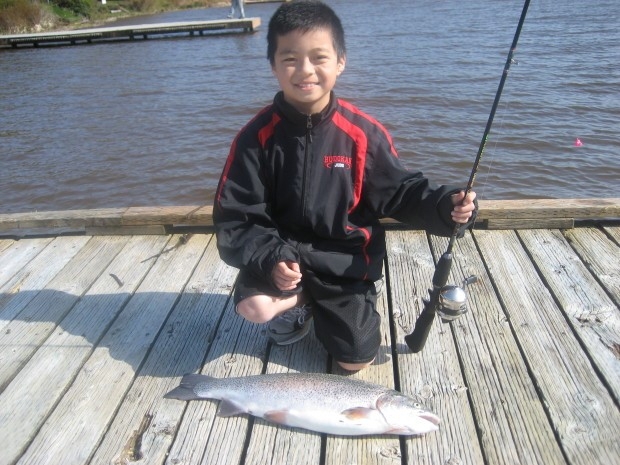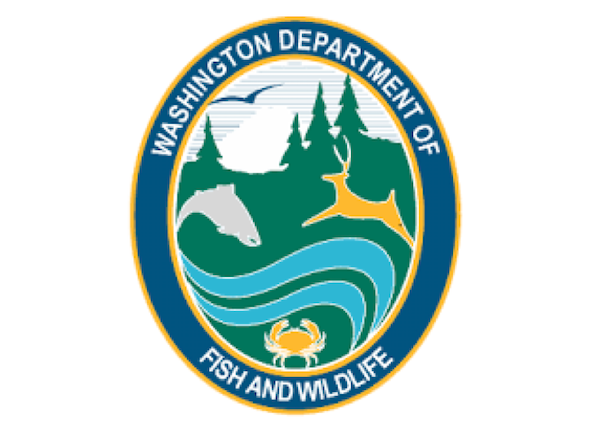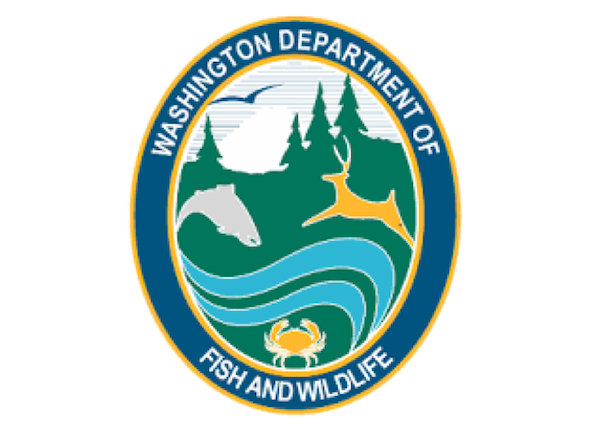Washington Fish Report
Fish Report for 4-1-2022
Fish Report for 4-1-2022
From statewide fishing possibilities to gathering shellfish to turkey hunting - spring is here!

by WA Department of Fish & Wildlife Staff
4-1-2022
Website
Spring has sprung, bringing with it brighter, sunny days and warmer weather along with a growing list of options for fishing, wildlife watching, razor clam digging, and clam and oyster gathering.
Anglers can make plans to participate in the statewide lowland lakes trout fishing opener on April 23-24 when millions of trout are stocked into hundreds of lakes to boost opportunities.
"I'm expecting another strong year for trout fishing and participation, and we're also planting some bigger trout in time for the opener," said Steve Caromile, inland fish manager with the Washington Department of Fish and Wildlife (WDFW). "Washington has one of the biggest fish hatchery systems in the world allowing us to produce millions of fish each year."
WDFW hatchery staff have been busy planting around 2.1 million catchable-size rainbow trout averaging 2 to 2.5 fish per pound in size. To sweeten the pot, more than 147,000 "jumbo" rainbow trout averaging one pound or more are destined to some lakes.
The icing on the cake are more than 12.4 million fingerling and fry -- 10 to 600 fish per pound in size -- that were planted two years ago. Adding to it is nearly 1.5 million trout stocked in 2021 averaging 2.6 to 10 fish per pound in size. These fish should be in the 8- to 12-inch range. Visit the WDFW stocking plan webpage for more information.
Opening day also marks the beginning of the annual statewide trout derby, with thousands of prizes up for grabs for catching a tagged trout in lakes across Washington.
Whether you're a longtime angler or just getting started, everyone can enjoy trout fishing from a boat, dock or shoreline.
Fishing gear consists of a lightweight, limber 7- to 8-foot rod and a medium-sized spinning reel loaded with 6- to 8-pound test monofilament fishing line. Add one or two size 8 or 9 egg sinkers to the mainline and a small barrel swivel tied to an 18- to 30-inch leader with a size 8 or 10 egg or worm hook. You can also place a bobber with split shot weights to a leader and bait. Adjust the bobber setup to the proper depth depending on where the fish are congregating.
The most popular bait is soft, moldable dough baits, which come in a variety of colors, shapes, and sizes. The best "old school" choices are worms, maggots, salmon eggs, scented marshmallows or small spinners and spoons.
Freshly stocked trout tend to hang out just below the surface in 3 to 5 feet of water and often lurk right where the hatchery trucked unloaded them. It usually takes a week or two before they eventually spread out and move to deeper areas of a lake. Spring is the best time of year when the water temperatures are cooler, and trout tend to be more active.
Remember as a new season of outdoor adventures gets underway, Washingtonians need to purchase their 2022-2023 recreational hunting and fishing licenses. The 2021-2022 licenses expired on March 31. The public can buy recreational licenses by phone at 866-246-9453 or online.
The Washington State Parks and Recreation Commission Boating Program would like to remind you to take a boater safety education course, if you haven't already, to be prepared for spring and summer. In Washington, boaters who operate a vessel with a 15-horsepower engine or greater must carry a Boater Education Card to prove they passed an accredited boating safety education course.
Whether you're a longtime angler or just getting started, everyone can enjoy trout fishing from a boat, dock or shoreline.
Fishing gear consists of a lightweight, limber 7- to 8-foot rod and a medium-sized spinning reel loaded with 6- to 8-pound test monofilament fishing line. Add one or two size 8 or 9 egg sinkers to the mainline and a small barrel swivel tied to an 18- to 30-inch leader with a size 8 or 10 egg or worm hook. You can also place a bobber with split shot weights to a leader and bait. Adjust the bobber setup to the proper depth depending on where the fish are congregating.
The most popular bait is soft, moldable dough baits, which come in a variety of colors, shapes, and sizes. The best "old school" choices are worms, maggots, salmon eggs, scented marshmallows or small spinners and spoons.
Freshly stocked trout tend to hang out just below the surface in 3 to 5 feet of water and often lurk right where the hatchery trucked unloaded them. It usually takes a week or two before they eventually spread out and move to deeper areas of a lake. Spring is the best time of year when the water temperatures are cooler, and trout tend to be more active.
Remember as a new season of outdoor adventures gets underway, Washingtonians need to purchase their 2022-2023 recreational hunting and fishing licenses. The 2021-2022 licenses expired on March 31. The public can buy recreational licenses by phone at 866-246-9453 or online.
The Washington State Parks and Recreation Commission Boating Program would like to remind you to take a boater safety education course, if you haven't already, to be prepared for spring and summer. In Washington, boaters who operate a vessel with a 15-horsepower engine or greater must carry a Boater Education Card to prove they passed an accredited boating safety education course.
Lastly, keep in mind wearing a personal flotation device in, on or around water saves lives as drowning is one of the leading causes of fatalities especially among young children.
More Reports
Recreational sturgeon fishery to open May 11 in Columbia River estuary
Columbia River
3-31-2022
OLYMPIA – Fishery managers from Washington and Oregon today announced an opportunity to catch and retain legal-size white sturgeon in...... Read More
WDFW approves 6-days of razor clam digs beginning April 1

3-24-2022
OLYMPIA – Razor clam enthusiasts can head to four coastal beaches as shellfish managers with the Washington Department of Fish...... Read More

Washington.FishReports.com © 2024. All Rights Reserved.
Website Hosting and Design provided by TECK.net
Website Hosting and Design provided by TECK.net
